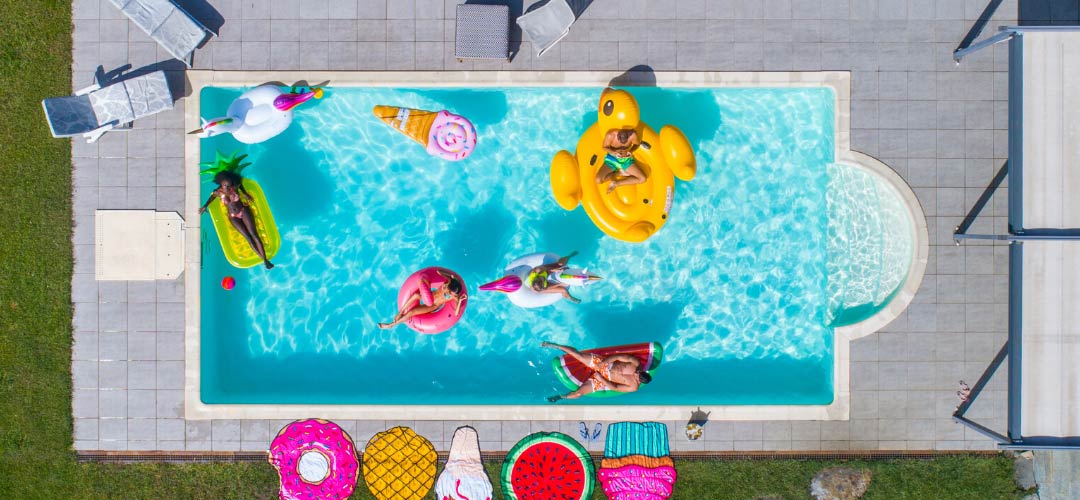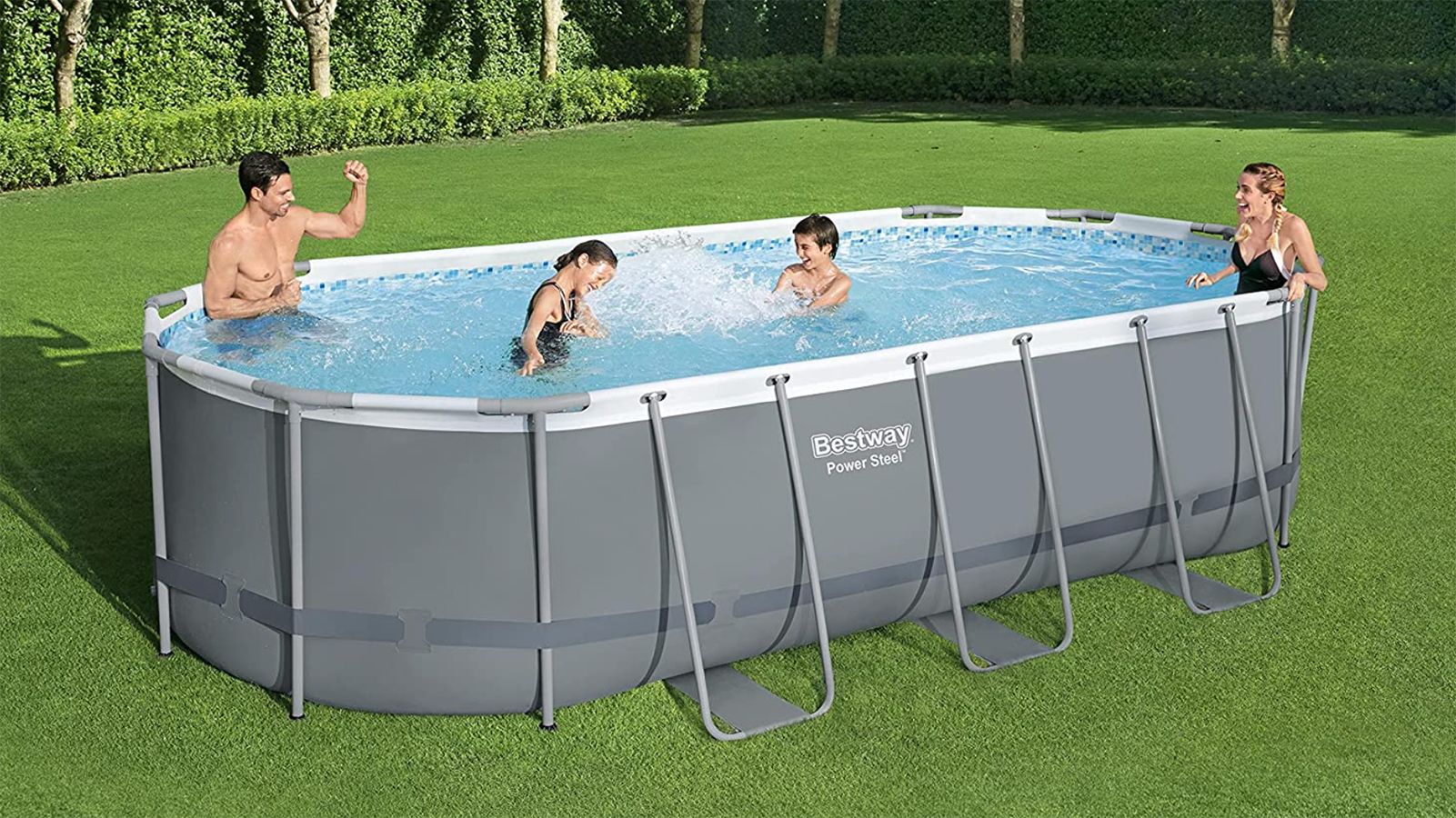Running your pool pump 24 hours a day may seem like a logical choice to keep your pool clean and well-maintained. However, is it really necessary, or even beneficial? In this article, we will explore the advantages and disadvantages of running your pool pump constantly, helping you make an informed decision about the best pumping schedule for your pool.
This image is property of images.pexels.com.
Benefits of Running the Pool Pump 24 Hours a Day
Maintains Water Quality
Running the pool pump 24 hours a day is a great way to ensure that the water in your pool remains clean and clear. The continuous circulation of water helps to prevent stagnation and eliminates any dead spots where debris and dirt can accumulate. By keeping the water moving, the pool pump helps to distribute the chemicals evenly throughout the pool, making it easier to maintain proper water balance and sanitation.
Prevents Algae Growth
One of the biggest challenges for pool owners is preventing the growth of algae. Algae thrives in warm, stagnant water, which is why it is important to keep the pool water circulating continuously. When the pool pump runs 24 hours a day, it prevents the water from becoming stagnant and creates an environment that is less favorable for algae growth. This helps to keep your pool water crystal clear and free from the unsightly green or black algae blooms.
Circulates Chemicals Effectively
Proper pool maintenance requires the regular addition of chemicals to keep the water clean and healthy. When the pool pump runs continuously, it helps to circulate these chemicals more effectively. The flow of water ensures that the chemicals are distributed evenly throughout the pool, helping to maintain the pH balance and sanitizer levels. This allows the chemicals to do their job effectively, keeping the water safe for swimming and reducing the risk of bacteria and other contaminants.
Potential Drawbacks of Running the Pool Pump 24 Hours a Day
Increased Energy Consumption
Running the pool pump continuously will inevitably lead to increased energy consumption. The pump requires electricity to operate, and the longer it runs, the more energy it will use. This can result in higher energy bills, which may not be desirable for everyone. It is important to consider the potential increase in energy consumption and weigh it against the benefits of running the pump continuously.
Higher Utility Bills
As mentioned earlier, running the pool pump 24 hours a day will lead to higher utility bills. The cost of electricity can add up over time, especially if you live in an area with high energy rates. It is important to factor in the potential increase in utility bills when deciding whether or not to run the pump continuously. If cost is a concern, there are alternative pump schedules and cost-saving measures that can be considered.
Excessive Wear and Tear on the Pump
Running the pool pump 24 hours a day can also lead to excessive wear and tear on the pump. The constant operation puts strain on the motor and other components, potentially shortening the lifespan of the pump. Regular maintenance and inspections are important to ensure that the pump remains in good working condition. It is also worth considering the cost of repairing or replacing the pump down the line.
Factors to Consider Before Running the Pool Pump 24 Hours a Day
Pool Size
The size of your pool plays a significant role in determining how long the pump needs to run. Larger pools typically require longer runtimes to ensure proper circulation and filtration. Assessing the size of your pool is crucial in determining whether it is necessary or practical to run the pump continuously.
Filtration System
The effectiveness of your pool’s filtration system should also be taken into consideration. A high-quality filtration system can remove debris and contaminants more efficiently, allowing for shorter pump runtimes. If you have a highly efficient filtration system in place, running the pump 24 hours a day may not be necessary. However, if your filtration system is not as advanced, longer runtimes may be required.
Climate and Season
The climate and season in which your pool is located can have an impact on how long the pump needs to run. Warmer climates and summer months may require longer pump runtimes to combat higher temperatures and increased usage. It is important to consider the specific climate and season of your area to determine the ideal pump runtime.
Usage Pattern
The pattern of pool usage is another important factor to consider. If your pool sees heavy usage with frequent swimming and activities, it may require longer pump runtimes to maintain water quality. Conversely, if your pool is used less frequently, shorter runtimes may be sufficient. Understanding how often and for how long the pool is used can help in determining the appropriate pump runtime.
Choosing the Right Pool Pump
Efficiency Ratings
When selecting a pool pump, it is important to consider its efficiency rating. Look for pumps that are ENERGY STAR® certified or have high energy efficiency ratings. These pumps are designed to operate more efficiently, helping to reduce energy consumption and lower utility bills.
Variable Speed Options
Another feature to consider is the availability of variable speed options. Variable speed pumps allow you to adjust the speed of the pump, which can help to further optimize energy usage. By operating the pump at lower speeds for longer periods, you can achieve the same circulation and filtration benefits while using less energy.
Noise Level
Pool pumps can generate a significant amount of noise, especially older models. When choosing a pool pump, consider the noise level and select one that operates quietly. This will ensure a more enjoyable swimming experience and minimize disruptions around the pool area.
Warranty
Lastly, check the warranty offered by the manufacturer. A reliable pool pump should come with a reasonable warranty period, providing you with peace of mind and protection against any potential defects or malfunctions. Look for pumps with longer warranties to ensure that you are covered in case of any issues.
This image is property of images.pexels.com.
Alternative Pump Schedules to Consider
Running the Pump for 8-12 Hours a Day
If running the pump continuously is not feasible or desirable, an alternative option is to run the pump for 8-12 hours a day. This duration is generally sufficient to maintain proper circulation and filtration, especially if you have an efficient filtration system in place. By adjusting the pump schedule, you can still ensure clean and clear pool water while reducing energy consumption and utility bills.
Utilizing Timer Settings
Many modern pool pumps come equipped with timer settings that allow you to program the pump to run at specific times. This feature can be utilized to schedule the pump to run during off-peak hours or when pool usage is minimal. By running the pump during these times, you can take advantage of lower energy rates and further reduce your overall energy consumption.
Running the Pump during Off-Peak Hours
Running the pump during off-peak hours is another effective strategy to save on energy costs. Off-peak hours typically refer to times of the day when overall energy demand is lower, resulting in cheaper electricity rates. By adjusting the pump schedule to align with off-peak hours, you can run the pump for shorter periods while still maintaining water quality.
Cost-Saving Measures for Continuous Pump Operation
Investing in an Energy-Efficient Pump
If you decide to run the pump 24 hours a day, investing in an energy-efficient pump is a smart choice. These pumps are specifically designed to minimize energy consumption while maintaining optimal circulation and filtration. Though they may have a higher upfront cost, the long-term energy savings can offset the initial investment.
Optimizing Filtration System
To reduce energy consumption, ensure that your filtration system is optimized for maximum efficiency. Regularly clean and backwash the filter to remove debris and contaminants, allowing the pump to operate more efficiently. Additionally, consider upgrading to a more advanced filtration system that can remove smaller particles and require less frequent maintenance.
Monitoring Chemical Levels Regularly
Regularly monitoring the chemical levels in your pool is essential for maintaining water quality. By keeping the chemical levels properly balanced, you can prevent the need for excessive filtration and circulation, which can contribute to energy waste. Test the water regularly and adjust the chemical levels as needed to minimize the load on the pump.
Reducing Water Evaporation
Water evaporation can place additional strain on the pump and increase the need for water replacement, resulting in higher utility bills. To reduce water evaporation, consider using a pool cover when the pool is not in use. A pool cover reduces exposure to the sun and wind, helping to slow down the evaporation process and minimize the workload on the pump.
This image is property of images.pexels.com.
Regular Maintenance Tips
Cleaning the Pump and Filter
Regularly cleaning the pump and filter is crucial to ensure optimal performance. Remove any debris, leaves, or other objects that may have accumulated in the pump strainer or filter. Clean or replace the filter cartridge as recommended by the manufacturer. Routine maintenance will help to prevent clogs and keep the pump running smoothly.
Checking for Leaks
Inspect the pump and plumbing for any signs of leaks. Leaks can lead to water loss and increased energy consumption as the pump works harder to compensate. If you notice any leaks, promptly repair or replace the affected parts to prevent further damage and maintain pump efficiency.
Inspecting and Lubricating O-Rings
O-rings play an important role in maintaining a watertight seal in your pump. Periodically inspect the O-rings for wear or damage and replace them as needed. Additionally, lubricate the O-rings with a silicone or Teflon-based lubricant to ensure smooth operation and minimize friction.
Replacing Worn Out Parts
Over time, certain parts of your pool pump may wear out and require replacement. Common parts that may need replacement include the pump seals, impeller, or motor bearings. Regularly inspect these components and consult the manufacturer’s recommendations for the lifespan of each part. Replacing worn out parts in a timely manner will help to maintain the pump’s efficiency and prevent costly repairs.
Tips for Optimizing Pool Pump Efficiency
Using a Pool Cover
Using a pool cover when the pool is not in use can greatly reduce evaporation and minimize the workload on the pump. A pool cover acts as a barrier, preventing heat loss and evaporation caused by wind and sunlight. By keeping the pool covered when it is not in use, you can maintain water temperature and reduce the need for excessive pump runtimes.
Reducing Backwashing Frequency
Backwashing your pool filter is an important maintenance task, but it can also waste a significant amount of water and put additional strain on the pump. To optimize efficiency, minimize the frequency of backwashing. Instead, try using a filter cleaning solution or a filter aid to extend the time between backwashing sessions.
Minimizing Pool Contamination
Preventing pool contamination is key to reducing the workload on the pump. Encourage pool users to rinse off any lotions, oils, or other substances before entering the pool. Additionally, regularly skim the surface of the pool to remove any debris or leaves. By keeping the pool clean and reducing the amount of debris and contaminants, you can minimize the need for excessive pump runtimes.
Properly Balancing the Water Chemistry
Maintaining proper water chemistry is essential for pool health and can contribute to pump efficiency. Test the water regularly and adjust the chemical levels as needed to ensure proper pH balance and sanitizer levels. Balanced water requires less circulation and filtration, resulting in shorter pump runtimes and energy savings.
Determining the Ideal Pool Pump Runtime
Consulting with Professionals
If you are unsure about the ideal pump runtime for your pool, it is always a good idea to consult with pool professionals. They can assess the specific characteristics of your pool, such as size, filtration system, and usage patterns, and provide personalized recommendations for the optimal pump runtime. Their expertise can help you make an informed decision that balances water quality and energy efficiency.
Monitoring Water Clarity and Quality
Keep a close eye on the clarity and quality of your pool water. If you notice any deterioration or signs of contamination, it may be an indication of inadequate pump runtimes. Adjust the pump schedule accordingly and monitor the water closely to ensure that the changes are effective in maintaining water quality.
Considering Pool Size and Usage
As mentioned earlier, the size of your pool and the frequency of its usage are important factors in determining the ideal pump runtime. Consider the specific characteristics of your pool and how it is used to determine how long the pump needs to run to ensure proper circulation and filtration. Adapting the pump schedule to the specific needs of your pool can help to optimize its performance.
Adjusting Pump Runtime Based on Season
Seasonal changes can significantly impact the pool’s water chemistry, temperature, and usage patterns. Be mindful of these changes and adjust the pump runtime accordingly. For example, during the summer months when the pool is used more frequently and the water temperature is higher, longer pump runtimes may be necessary. Conversely, during the cooler months when pool usage is reduced, shorter runtimes may suffice.
Conclusion
Deciding whether or not to run the pool pump 24 hours a day requires careful consideration of the benefits, potential drawbacks, and factors specific to your pool. While continuous pump operation has advantages such as maintaining water quality, preventing algae growth, and effective chemical circulation, it also comes with increased energy consumption, higher utility bills, and additional wear and tear on the pump. By taking into account pool size, filtration system, climate, usage patterns, and energy-efficient pump options, you can make an informed decision on the ideal pump runtime. Additionally, considering alternative pump schedules, implementing cost-saving measures, and prioritizing regular maintenance can help optimize pump efficiency and prolong the lifespan of your pool equipment. Remember to consult professionals, monitor water quality, and adjust pump runtimes based on seasonal changes. With the right approach and attention to detail, you can enjoy a clean and well-maintained pool while minimizing energy consumption and costs.









